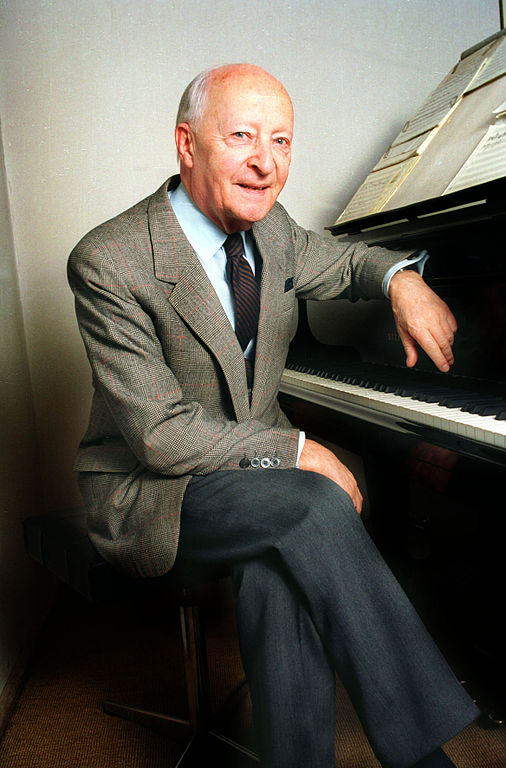Lutoslawski, Paganini Variations for Two Pianos
 The Polish born Witold Lutoslawski (1913-1994) has to have had one of the most interesting answers to the question “What did you do in the War?” He graduated from the Warsaw Conservatory in 1936 (piano) and 1937 (composition), but he was called up for military service when Germany invaded Poland in 1939. He was captured by the Germans, escaped, and walked 250 miles back to Warsaw.
The Polish born Witold Lutoslawski (1913-1994) has to have had one of the most interesting answers to the question “What did you do in the War?” He graduated from the Warsaw Conservatory in 1936 (piano) and 1937 (composition), but he was called up for military service when Germany invaded Poland in 1939. He was captured by the Germans, escaped, and walked 250 miles back to Warsaw.
During most of the occupation of Warsaw, he worked as an arranger and pianist, playing in bars and cafes. He formed a piano duo with Andrzej Panufnik. They created their own arrangements of numerous pieces. But Lutoslawski left Warsaw just before the Warsaw Uprising. The city was destroyed and all of the duo’s arrangements were lost, except one: the Variations on a Theme by Paganini.
His bio is no less dramatic before the war. His father fled Warsaw in 1915, taking the family to Moscow. But the political winds in Moscow shifted with the Bolshevik Revolution in 1917, and his father was executed along with his older brother.
It’s tough being Polish. Politics would continue to play a significant role with Lutoslawski. He would run afoul of Stalin’s rules against modernism in music. In later years, he took a stand in support of the Solidarity movement led by Lech Wałęsa in the 1980s.
Lutoslawski maintained that his biography had nothing to do with his music. Writing in The Guardian, Tom Service noted:
You don’t have to look for clues in the communist regime to find the foundations of Lutosławski’s harmonic language, but the concentration, ravishment, and refinement of his music could not have been written by anyone else at any other time. Lutosławski the man was as immaculate, fastidious, and restrained as his music.
These variations may initially strike you as anything but restrained, but when you consider the clarity of form, variety of expression, and the overall brevity of the piece, you may see why Lutoslawski had a reputation for writing works that didn’t contain any extra notes.
Several years ago we featured Paganini’s Caprice No. 24, which provides the theme for Lutoslawski’s variations. Numerous composers have written variations on this theme, most famously Brahms (op. 35) and Rachmaninov’s Rhapsody on a Theme by Paganini, but many others including Chopin, Liszt, Benny Goodman, Andrew Lloyd Webber, and my old KU colleague James Barnes.



